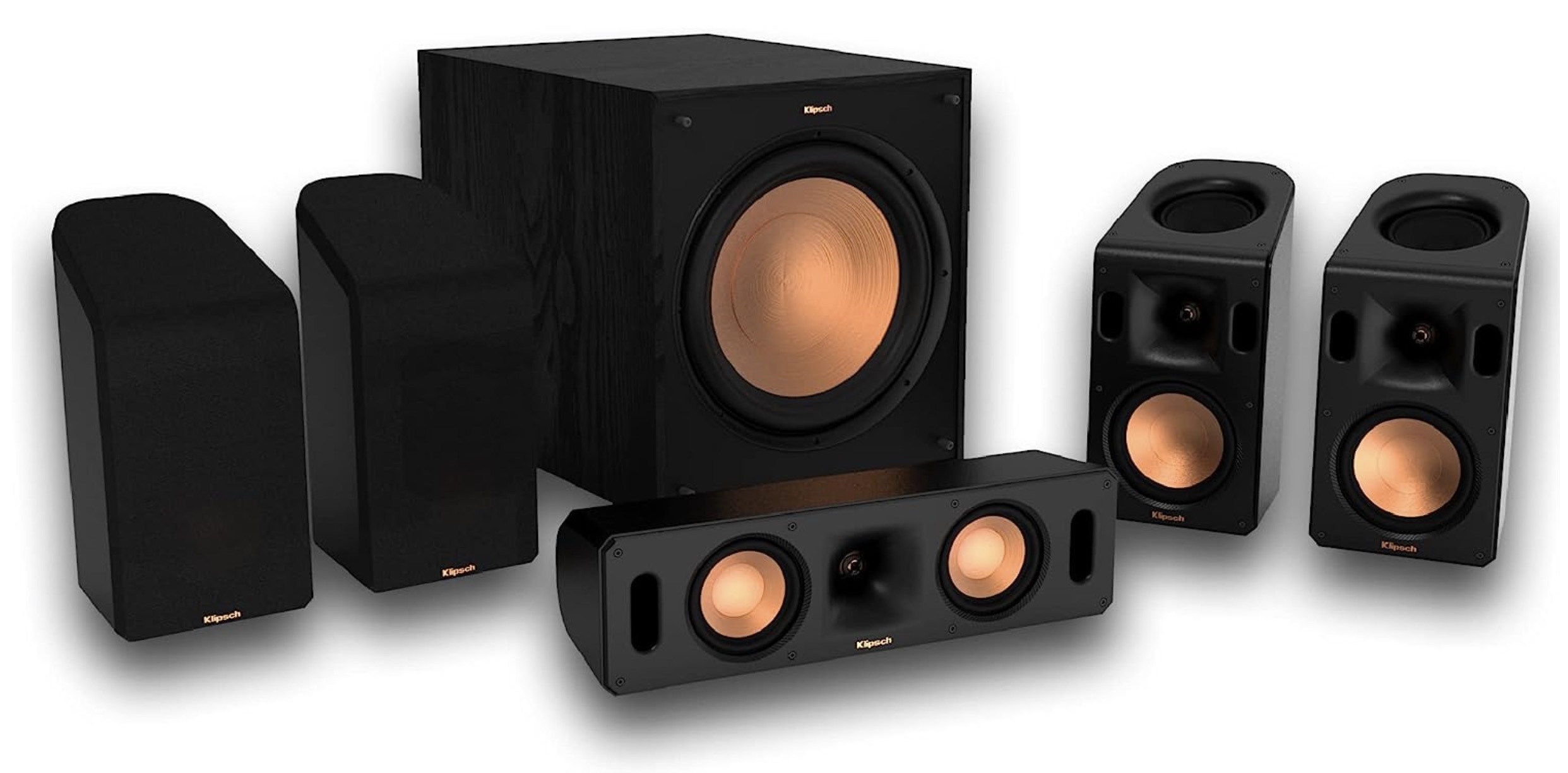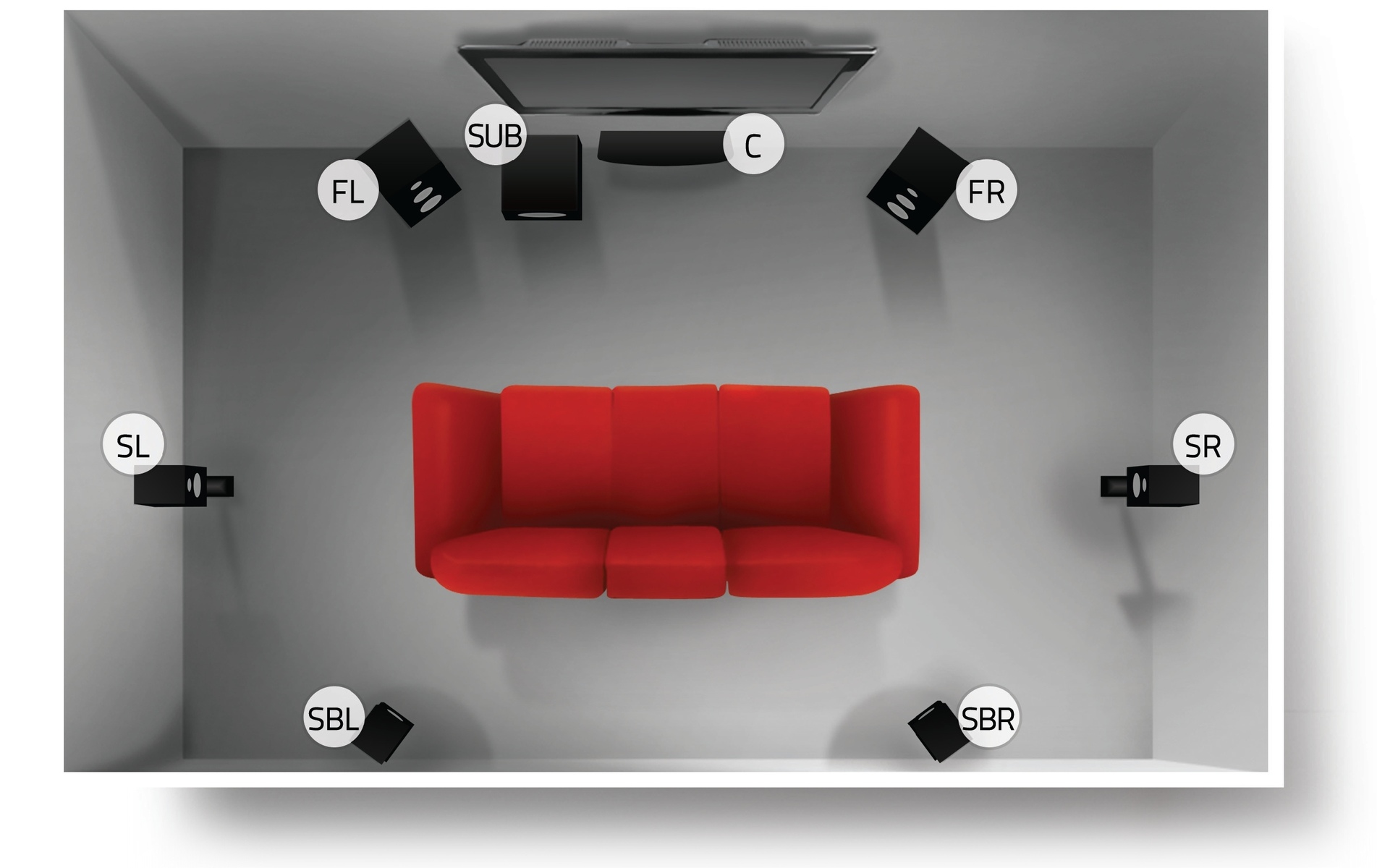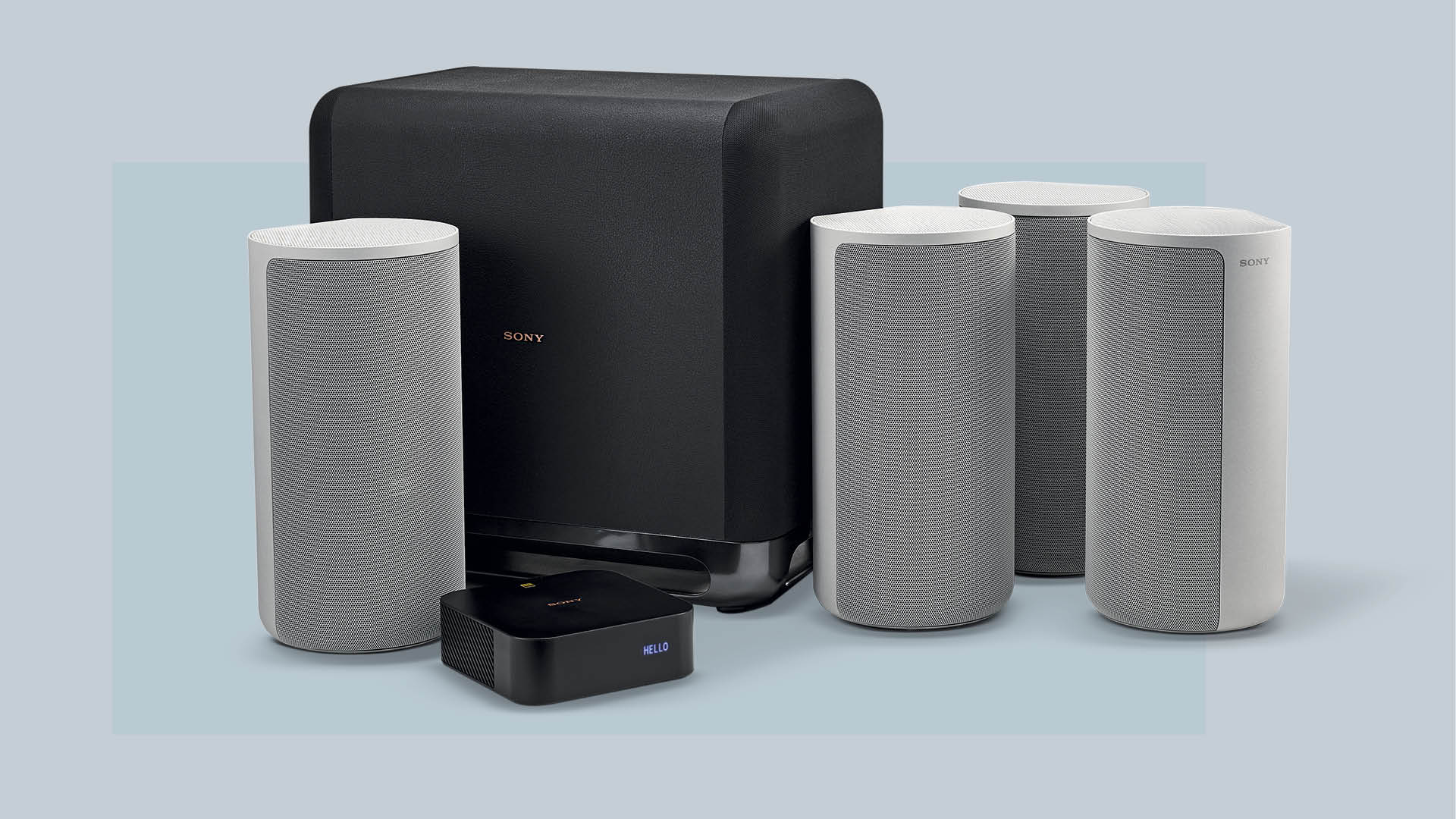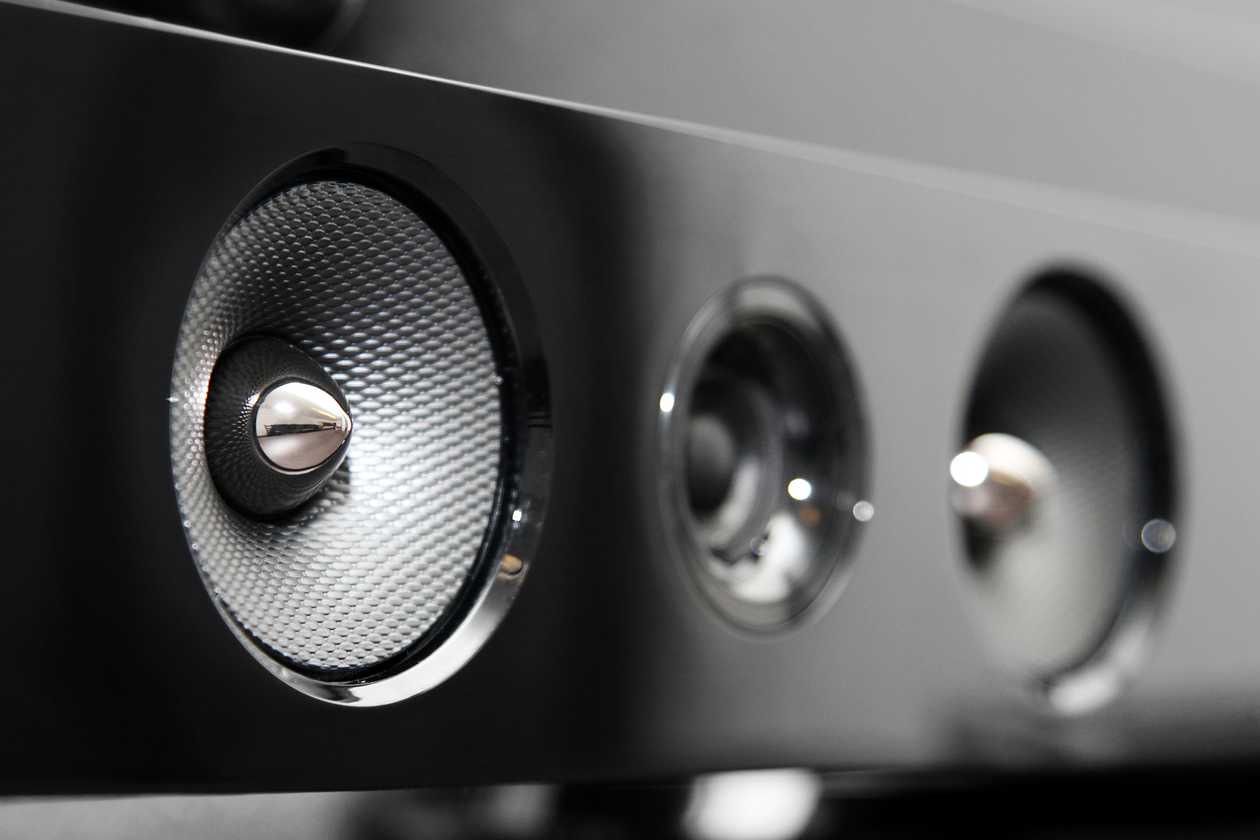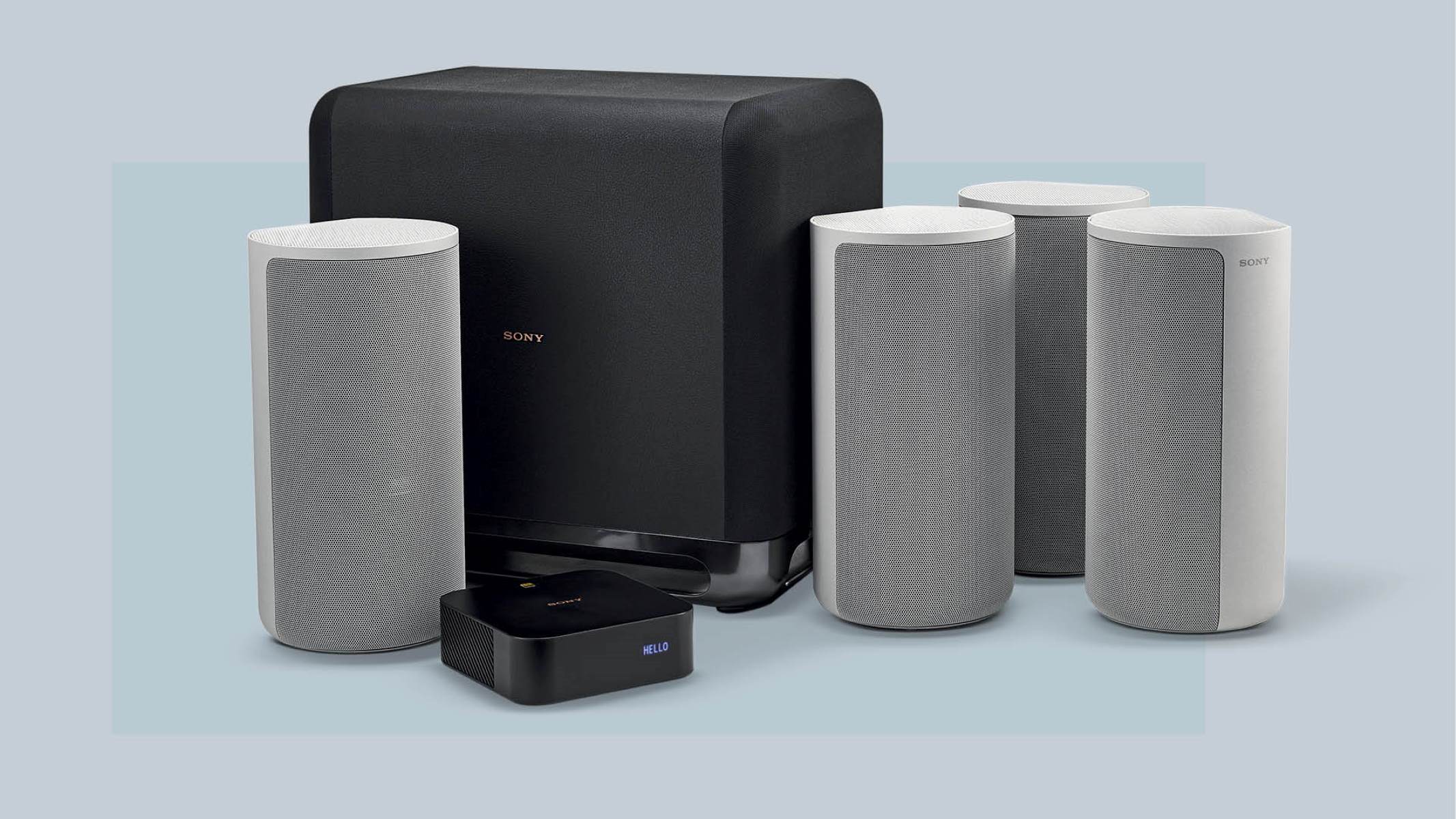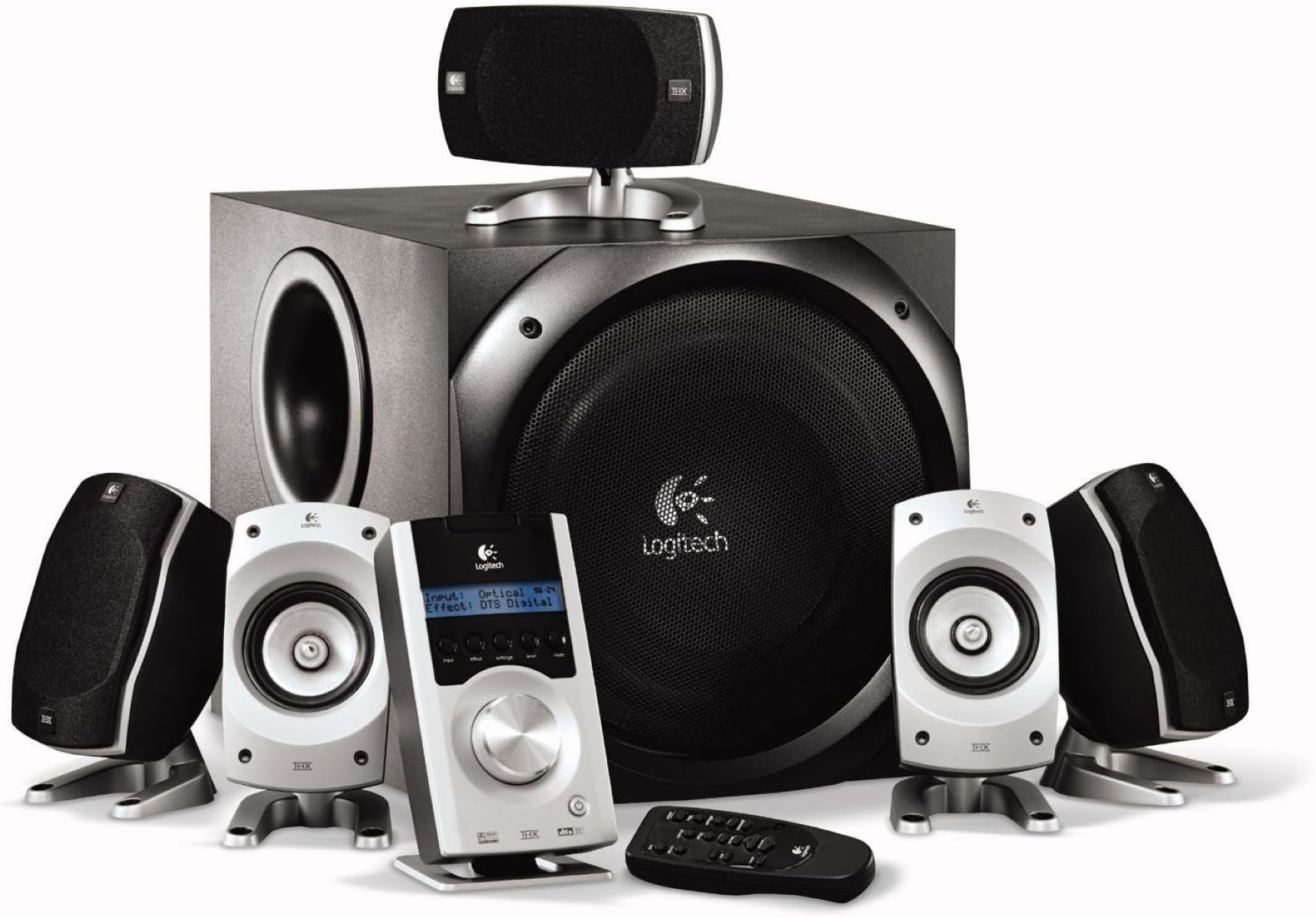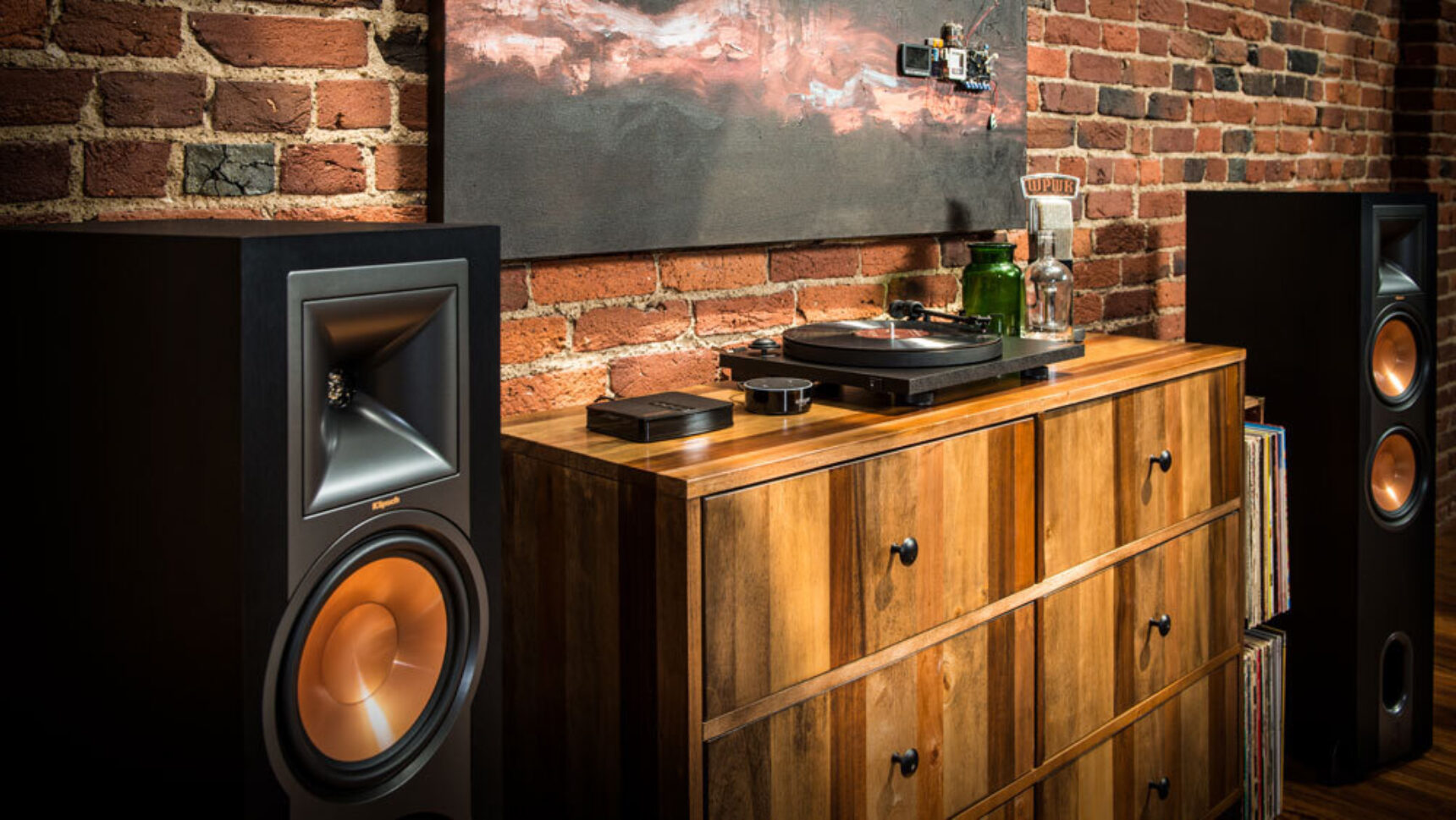Introduction
Welcome to the world of immersive audio experiences with a 5.1 surround sound system. Whether you’re a movie buff, a gaming enthusiast, or an audiophile looking for the ultimate audio setup, a 5.1 surround sound system can elevate your entertainment to new heights.
Imagine sitting in your living room, watching your favorite action movie, and feeling every explosion reverberating through the room. Picture yourself immersed in a virtual world, hearing every subtle detail of a gameplay experience as if you were right in the middle of the action. With a 5.1 surround sound system, these experiences become a reality.
A 5.1 surround sound system is a configuration that reproduces audio in a way that mimics the way sound is heard in the real world. It consists of multiple speakers strategically placed around the room, creating a multidimensional audio field that surrounds the listener.
Whether you’re a casual listener or a dedicated audio enthusiast, a 5.1 surround sound system can transform your audio experience. It brings depth, clarity, and realism to your favorite movies, music, and games. With this system, you can hear every detail, from subtle whispers to roaring explosions, creating a truly immersive entertainment experience.
So, if you’re ready to take your audio experience to the next level, join us as we explore the world of 5.1 surround sound systems. Discover the components that make up this setup, the benefits it offers, and how to set up and upgrade your very own 5.1 surround sound system.
What is a 5.1 Surround Sound System?
A 5.1 surround sound system is a type of audio setup that reproduces sound from multiple channels to create a realistic and immersive audio experience. The “5.1” in its name refers to the configuration of speakers used in the system.
In a 5.1 surround sound system, there are five main speakers and one subwoofer. The main speakers include a center speaker, left and right front speakers, and left and right surround (or rear) speakers. These speakers are positioned strategically around the room to create a surround sound effect.
The center speaker plays a crucial role, as it anchors the dialogue and other central sound elements to the screen. The front speakers provide stereo sounds and handle most of the audio frequency ranges. The surround speakers create ambient and positional audio effects, capturing the depth and directionality of sound.
The subwoofer, also known as a “.1” component, is responsible for reproducing low-frequency sounds such as deep bass and rumbling effects. It adds depth and impact to the overall sound experience, making explosions, crashes, and other low-frequency effects more powerful and realistic.
A 5.1 surround sound system can be used for various entertainment purposes, including watching movies, playing video games, and listening to music. It allows you to immerse yourself in the audio, bringing the entertainment to life and enhancing your overall experience.
With a 5.1 surround sound system, you can hear sound effects coming from different directions, creating a sense of depth and realism. This creates a more engaging and lifelike audio experience, putting you in the center of the action.
Whether you’re watching a thrilling action movie, playing a first-person shooter game, or listening to your favorite music album, a 5.1 surround sound system can transform the way you perceive and enjoy audio.
Now that we understand the basics of a 5.1 surround sound system, let’s explore the components that make up this setup and the benefits it offers.
Components of a 5.1 Surround Sound System
A 5.1 surround sound system consists of several essential components that work together to deliver an immersive audio experience. Understanding these components will help you build and optimize your setup for the best audio performance.
1. Center Speaker: The center speaker is positioned above or below your TV screen and is responsible for reproducing dialogue and central sound elements. It ensures that voices and other important audio remain anchored to the on-screen action, creating a more realistic and focused soundstage.
2. Front Speakers: The left and right front speakers produce stereo sound and handle a wide range of audio frequencies. Placed on either side of the TV or screen, these speakers provide a spacious sound field, making dialogue, music, and sound effects more immersive and precise.
3. Surround (or Rear) Speakers: The surround speakers are positioned on the sides or slightly behind the listening area, facing inward. They are responsible for creating ambient and positional audio effects, adding depth and breadth to your audio experience. These speakers help you feel immersed in the on-screen action by delivering sound from different directions.
4. Subwoofer: The subwoofer is dedicated to reproducing low-frequency sounds, including deep bass and rumbling effects. It completes the 5.1 setup by adding impact and realism to explosions, thunder, and other intense low-frequency audio. Placing the subwoofer in a strategic location in the room helps distribute bass evenly and enhances the overall audio experience.
5. AV Receiver: The heart of any 5.1 surround sound system is the AV (audio/video) receiver. It acts as a hub for connecting all the speakers and sources, such as a TV, Blu-ray player, or gaming console. The receiver amplifies and processes audio signals, ensuring proper distribution to each speaker. It also provides various sound modes and calibration settings to optimize the sound quality according to your preferences.
6. Wiring and Cables: Proper wiring and cables are crucial in setting up a 5.1 surround sound system. Speaker wires connect each speaker to the AV receiver, ensuring that audio signals are transmitted accurately. Digital cables, such as HDMI or optical cables, carry audio signals from sources to the AV receiver. High-quality cables are recommended to minimize signal loss and interference.
Remember, the performance of your 5.1 surround sound system depends on the quality of each component and their proper placement in your room. Taking the time to set up and calibrate your system will result in a more immersive and satisfying audio experience.
Now that we’ve covered the components of a 5.1 surround sound system, let’s explore the benefits it offers for your entertainment needs.
Benefits of a 5.1 Surround Sound System
A 5.1 surround sound system offers a multitude of benefits that enhance your audio experience and take your entertainment to the next level. Let’s explore some of the key advantages of investing in this audio setup:
1. Immersive Audio Experience: The primary benefit of a 5.1 surround sound system is the ability to create a truly immersive audio experience. The multi-channel setup with strategically placed speakers surrounds you with sound, making you feel like you’re in the middle of the action. This heightened sense of realism adds depth, dimension, and excitement to your movies, games, and music.
2. Spatial Sound Placement: With a 5.1 surround sound system, audio elements can be precisely placed in the soundstage. Sounds move across speakers, providing a realistic sense of direction and location. Whether it’s the sound of footsteps approaching from behind or a helicopter flying overhead, the spatial placement of sound enhances the overall immersion and makes the entertainment experience more engaging.
3. Enhanced Dialogue Clarity: The dedicated center speaker in a 5.1 surround sound system ensures clear and precise reproduction of dialogue. This eliminates the need to strain your ears to catch every word spoken on-screen. Whether you’re watching movies or TV shows, the improved dialogue clarity allows you to fully understand and appreciate the narrative without missing any important details.
4. Balanced Audio Distribution: The multiple speakers in a 5.1 setup distribute audio evenly throughout the room. This leads to a more balanced soundstage, where sound effects, music, and dialogue are properly separated and have their dedicated channels. It prevents audio from getting muddled or concentrated in a single direction, creating a more natural and enjoyable listening experience.
5. Deep and Powerful Bass: The inclusion of a subwoofer in a 5.1 surround sound system provides deep, robust bass that adds impact and excitement to your entertainment. Explosions, rumbling engines, and other low-frequency effects are felt and experienced, creating a visceral sensation that immerses you further into the content you’re enjoying.
6. Versatility: A 5.1 surround sound system is versatile and compatible with various sources, such as Blu-ray players, gaming consoles, streaming devices, and music players. Whether you’re watching movies, playing games, or listening to your favorite music, the system adapts to your needs, delivering an exceptional audio experience across different forms of media.
Overall, a 5.1 surround sound system offers an unparalleled audio experience, bringing your movies, games, and music to life. It elevates the way you engage with and enjoy your entertainment, immersing you in a world of sound that captivates and excites.
Now that we understand the benefits of a 5.1 surround sound system, let’s delve into how this audio setup actually works.
How Does a 5.1 Surround Sound System Work?
A 5.1 surround sound system works by utilizing multiple audio channels to create an immersive and realistic audio experience. The “5.1” in its name refers to the configuration of speakers used in the system.
The audio content, whether it’s a movie soundtrack, a video game, or a music album, is recorded or encoded into different audio channels. These channels separate the audio into distinct components, such as dialogue, music, and sound effects.
Let’s break down the working of a 5.1 surround sound system:
1. Center Channel: The center speaker plays a crucial role by reproducing the dialogue and central sound elements. It is responsible for anchoring the voices and other important audio to the screen, making sure the listener can hear the dialogue clearly and distinctly.
2. Front Left and Right Channels: The front left and right speakers deliver stereo sound and handle a wide range of audio frequencies. They provide a spacious sound field, making the music, sound effects, and ambient audio more immersive. These speakers enhance the overall clarity and stereo separation of the audio.
3. Surround (or Rear) Channels: The surround speakers are positioned on the sides or slightly behind the listening area. They create ambient and positional audio effects, capturing the depth and directionality of sound. By delivering audio from different directions, they enhance the sense of immersion, making the listener feel like they’re a part of the on-screen action.
4. Subwoofer Channel: The subwoofer, often referred to as the “.1” in the system, reproduces low-frequency sounds, such as deep bass and rumbling effects. It adds depth and impact to explosions, thunder, and other intense low-frequency audio. The subwoofer creates a tactile sensation, allowing the listener to feel the powerful, low-end sound effects.
To make the system work, you need an AV receiver or amplifier specifically designed for a 5.1 surround sound system. The AV receiver serves as the central hub that receives the audio input from various sources, decodes it, and then distributes the audio signals to the appropriate speakers. It amplifies the low-level audio signals and ensures proper distribution to all the speakers in the system.
With the right audio content and a properly configured system, the 5.1 surround sound system brings the audio to life, creating a captivating and immersive audio experience. It allows you to hear sound effects from different directions and feel like you’re right in the middle of the action.
Now that we have a better understanding of how a 5.1 surround sound system works, let’s move on to the process of setting up this audio setup.
Setting Up a 5.1 Surround Sound System
Setting up a 5.1 surround sound system requires careful planning and proper placement of speakers to achieve optimal audio performance. Follow these steps to set up your system:
1. Room Considerations: Choose a room that accommodates your 5.1 surround sound system. Consider the room’s size, layout, and furniture placement. Ensure that there is enough space for proper speaker positioning and that the room’s acoustics are suitable for optimal sound quality.
2. Speaker Placement: Position the center speaker above or below your TV or projector screen. Place the left and right front speakers on either side of the screen, facing the listener. The surround speakers should be placed on the sides or slightly behind the listening area, facing inward. Experiment with speaker placement for the best surround sound experience.
3. Subwoofer Placement: The subwoofer can be placed anywhere in the room, as low-frequency sounds are non-directional. However, for optimal performance, try placing it near a wall or a corner to take advantage of room resonance. Experiment with different subwoofer placements to find the position that offers the best bass response.
4. Wiring and Connectivity: Connect each speaker to the AV receiver using the appropriate speaker wire. Ensure that the correct polarity (+/-) is maintained for accurate sound reproduction. Connect your audio sources, such as a Blu-ray player or gaming console, to the AV receiver via HDMI or optical cables. Properly label each cable for easy identification.
5. AV Receiver Setup: Follow the manufacturer’s instructions to set up your AV receiver. This may involve configuring audio settings, speaker levels, and calibration. Most AV receivers come with microphone setups that automatically adjust audio output based on your room’s acoustics. Use these calibration features to optimize your system’s audio performance.
6. Testing and Fine-tuning: Once your system is set up, play different audio content and test the surround sound effects. Adjust the speaker levels and settings on the AV receiver to achieve a balanced soundstage. Fine-tune your system by exploring the various audio modes and equalizer settings to suit your personal preferences.
7. Room Acoustics: Consider enhancing the room’s acoustics by adding acoustic panels, rugs, or curtains to reduce sound reflections and improve audio quality. Experiment with room treatments to optimize the sound experience and minimize any unwanted echoes or reverberations.
Remember, each room is unique, and the ideal setup may vary. You may need to make adjustments and experiment with different speaker placements to achieve the best audio performance in your specific environment.
Now that your 5.1 surround sound system is set up and optimized, you can sit back, relax, and enjoy a truly immersive audio experience.
Upgrading to a 5.1 Surround Sound System
If you’re ready to upgrade your audio setup to a 5.1 surround sound system, there are a few things to consider to ensure a smooth and successful transition. Follow these steps to upgrade your current system:
1. Assess Your Existing Setup: Begin by evaluating your current audio setup. Determine whether your existing AV receiver and speakers are capable of supporting a 5.1 system. If not, you may need to replace or upgrade these components to ensure compatibility.
2. Plan Your Budget: Set a budget for your upgrade and determine how much you’re willing to invest in new speakers, an AV receiver, and any additional accessories or cables that may be required. Research and compare different options based on your budget and desired audio quality.
3. Choose the Right Speakers: Select speakers that complement the room size and meet your audio preferences. Consider factors such as speaker size, power handling capabilities, and overall sound quality. Opt for speakers that provide a balanced range of frequencies and fit well within your desired setup and aesthetic.
4. Upgrade Your AV Receiver: If your current receiver does not support a 5.1 setup, it’s necessary to upgrade to a receiver that can handle the additional channels and processing power required for surround sound. Look for an AV receiver that offers the features and connectivity options you need for your audio sources.
5. Plan for Speaker Placement: Determine the optimal speaker placement for your new 5.1 system based on the room layout and acoustics. Consider the recommended positions for the center, front, and surround speakers, as well as the placement of the subwoofer. Take measurements and make note of any furniture or obstacles that may affect speaker placement.
6. Wiring and Connectivity: Prepare the necessary cables and wiring to connect your new speakers and AV receiver. Ensure that you have the appropriate speaker wires and connectors for a 5.1 setup. Label each cable to make the setup process easier and cleaner.
7. Set Up and Calibrate: Follow the instructions provided by the manufacturers to set up your new speakers and AV receiver. Connect all the components, configure the settings, and perform any necessary calibration or speaker level adjustments. Utilize the calibration tools and features of your AV receiver to optimize sound performance based on the specific characteristics of your room.
8. Fine-Tuning and Testing: Once your new 5.1 surround sound system is set up, spend time fine-tuning the audio settings and testing the system with various media content. Make adjustments as needed to achieve the desired sound quality and surround sound experience.
By following these steps and investing in the right components, you can smoothly upgrade to a 5.1 surround sound system and enjoy a more immersive and engaging audio experience in your home.
Conclusion
Embarking on the journey of setting up a 5.1 surround sound system can elevate your audio experience to new heights. With careful planning, proper placement of speakers, and the right components, you can create a truly immersive and realistic audio environment in your home.
A 5.1 surround sound system brings your movies, games, and music to life by surrounding you with sound from different directions. The center speaker ensures clear dialogue reproduction, while the front speakers deliver stereo sound with precision. The surround speakers create a sense of depth and ambience, and the subwoofer adds impactful bass to low-frequency effects.
The benefits of a 5.1 surround sound system are numerous. It provides an immersive audio experience, offers spatial sound placement, enhances dialogue clarity, balances audio distribution, and adds deep and powerful bass. The versatility of the system allows you to enjoy various forms of media with optimized audio.
Setting up a 5.1 surround sound system requires careful consideration of room size, speaker placement, wiring, and calibration. By following the steps outlined, you can optimize your setup and maximize the performance of your system.
For those looking to upgrade their audio setup, transitioning to a 5.1 surround sound system involves assessing your current setup, setting a budget, selecting the right speakers and AV receiver, planning for speaker placement, wiring and connectivity, and performing setup and calibration procedures.
So, whether you’re a movie aficionado, a gamer seeking an edge, or a music lover in pursuit of the perfect sound, a 5.1 surround sound system is the gateway to a captivating audio experience.
Immerse yourself in the world of sound, where every detail comes to life, and let your senses be awakened by the power and fidelity of a 5.1 surround sound system.







